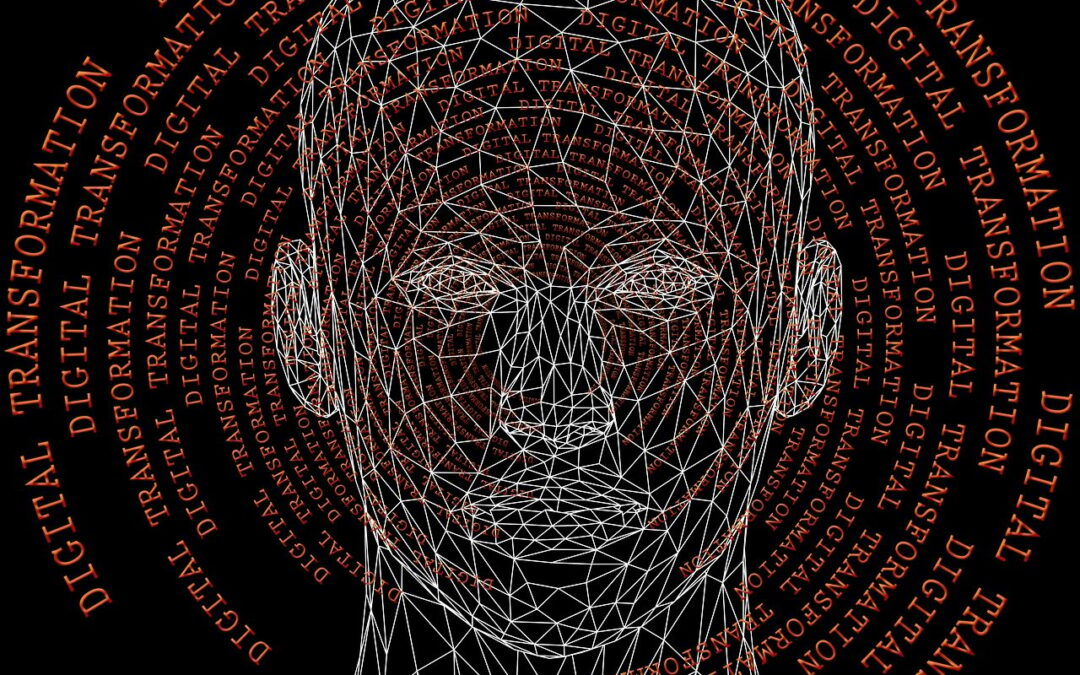
by Atiya Sheikh | Mar 30, 2025 | CEO, CFO, COO, CIO, News & Articles
What makes teamwork effective—and why it fails? In the workplace, no matter the industry—from healthcare and education to finance and tech—success is rarely the result of individual brilliance alone. It’s teams that deliver the results.
But what separates high-performing teams from those that struggle? Why do some groups work like clockwork while others fall into confusion, miscommunication, and missed deadlines?
Welcome to the psychology of teamwork—a field that uncovers what really goes on beneath the surface of collaboration, and how you can build better teams that consistently deliver.
Why Teamwork Is More Complex Than It Looks
Teamwork may sound like a soft skill, but it’s a sophisticated blend of group dynamics, leadership, communication, and role clarity. Psychology first began exploring teamwork through the lens of group identity: how we define ourselves through the teams we’re part of, and how we behave differently when we’re in a group versus acting alone.
Over time, the field evolved. Researchers now examine how teams form, how they make decisions, what makes them efficient—and what makes them fall apart.
When Teamwork Fails: A Real-World Scenario
Let’s take an example from the retail banking world—though the same principles apply across industries.
A customer services advisor meets with a client applying for a mortgage. The standard process involves the advisor gathering initial details and booking a follow-up with a mortgage adviser, who then conducts affordability checks and submits the formal application.
In this case, the advisor assumes the adviser will confirm all financial documentation. Meanwhile, the adviser—new to the branch—believes those checks have already been handled. A key document is missed, the application is delayed, and the client becomes frustrated.
No one was careless. But a lack of shared understanding and clear communication led to an avoidable error.
The Three Pillars of Effective Teamwork: Collaboration, Coordination, Communication
At the heart of any effective team are three essentials:
- Collaboration
True collaboration isn’t just working side-by-side—it’s aligning on a shared goal and appreciating the value of different perspectives. For instance, in a project team, one member might spot a client risk others overlook due to their specific expertise. Strong collaboration means their voice is heard and considered.
- Coordination
Teams must be clear on roles, responsibilities, and timing. Who’s doing what—and when? Without proper coordination, even simple tasks can fall through the cracks, especially in industries with tightly sequenced workflows like healthcare, finance, or manufacturing.
- Communication
Poor communication is the most common cause of team breakdowns. It’s not just about talking more—it’s about ensuring that information is accurate, timely, and reaches the right people.
Why Every Team Needs a Leader—But Not Always the Same Kind
Leadership style can make or break a team. Broadly speaking, there are two main styles:
- Democratic leadership: values group input, ideal for building trust and motivation.
- Autocratic leadership: makes decisions quickly, useful in high-pressure or time-sensitive settings.
The best leaders adjust their approach based on the team’s needs and the task at hand. Interestingly, research shows that gaining power tends to shift people toward more independent thinking—often reducing their willingness to consult others. This is true for both men and women, though women leaders often maintain a stronger group orientation even as they rise.
What Goes Wrong in Group Decisions? Two Common Pitfalls
- Groupthink
This occurs when teams avoid conflict to maintain harmony. Members stop questioning decisions—even bad ones. It’s how warning signs get ignored and poor choices are rubber-stamped. Think of a team launching a flawed product because no one wants to speak up.
- Group Polarisation
Sometimes, groups make more extreme decisions than individuals would. A cautious team becomes overly conservative, or a confident team takes bigger risks than any one member would suggest alone. It’s a distortion of reality that comes from collective confidence—and it can backfire.
Size Matters: Why Smaller Teams Often Perform Better
The ideal team size? Around five people.
Once a team grows beyond that, accountability tends to blur. People assume someone else will take responsibility. This leads to social loafing, where effort drops because everyone believes others are picking up the slack.
In large organisations, this problem scales. When something goes wrong, individuals are quick to say, “That wasn’t my area.” The collective “we” dissolves, replaced by a flurry of self-preservation.
The Cultural Side of Teamwork
Teamwork isn’t just psychological—it’s cultural. In Western countries, the individual is often seen as the core unit. In Eastern cultures like Japan or South Korea, the group comes first.
This plays out in how accountability is assigned. In Europe or the US, a failed initiative may be traced to a single manager. In Japanese firms, the entire team may take collective responsibility.
Understanding these cultural differences is vital, especially for global teams.
How to Build a High-Performing Team
Strong teams don’t come together by chance—they’re built deliberately. Here’s how:
- Keep teams as small as possible for the task
- Define clear roles and responsibilities
- Select members for both technical ability and interpersonal skills
- Create psychological safety where people feel safe speaking up
- Encourage empathy and perspective-taking
In some industries, exercises that ask team members to “step into each other’s shoes” have shown real value. For example, asking a team leader to write from the perspective of a frontline employee can open up new insights into how decisions are experienced on the ground.
Diversity Isn’t Just a Buzzword—It’s a Necessity
Teams that are too similar in mindset, background, or personality often suffer from groupthink. In sectors like consulting or investment banking, hiring from the same profile pool can reduce the range of ideas and increase competition within teams.
The strongest teams are diverse in thought, experience, and working styles—and know how to leverage that difference rather than suppress it.
Final Thoughts: The Future of Work Is Team-Based
Whether you’re delivering financial services, leading a healthcare team, managing a creative agency, or running a non-profit, your results depend on how well your team works together.
The psychology of teamwork offers more than theory—it gives us a framework to build better collaboration, avoid common pitfalls, and unlock real performance.
What makes teamwork effective—and why it fails? Because in the end, success isn’t just about having great people.
It’s about building great teams.
The Right Conversation Can Change Everything. Let’s Talk.
See Harvards Business Review

by Joy Maitland | Mar 1, 2025 | Board Members, Board Trustees, CEO, CFO, COO, CIO, Heads of Divisions, Managing Directors, News & Articles, Non-Executive Board Members, Senior Managers
Bold ideas and visionary leaders may capture headlines, but real organisational transformation emerges from the intricate web of new and evolving relationships.
Embracing Complexity: A Smarter Approach to Business Transformation
Transformation is often framed as a bold vision driven by senior leadership, executed through structured plans. Yet in today’s volatile business environment, this approach falls short. Real change does not come from rigid strategies but from the interplay of relationships, systems, and emerging opportunities. Leaders who embrace complexity rather than resist it will unlock new levels of agility, adaptability, and innovation.
The Flaw in Traditional Transformation Thinking
Many leaders assume transformation is best achieved through top-down control—a defined roadmap with clear milestones. While structure has its place, this approach underestimates the reality of complex organisations: change is non-linear, unpredictable, and shaped by countless interactions across teams, departments, and stakeholders.
Relying solely on executive directives often leads to missed opportunities and resistance. Employees on the front lines understand operational challenges and customer needs in ways that leadership alone cannot. When transformation efforts engage diverse perspectives and allow adaptive decision-making, organisations become more resilient and responsive.
Why Complexity is an Advantage
Businesses today operate in interconnected systems—supply chains, markets, and workforces that evolve continuously. Attempting to control every variable is futile. Instead, leaders should focus on enabling conditions where change can emerge organically.
A company that integrates feedback loops, cross-functional collaboration, and iterative learning creates agility at all levels. This allows teams to pivot when faced with unexpected challenges rather than being constrained by rigid plans. Complexity is not a barrier; it is a source of strength for organisations that build adaptability into their culture.
Leadership: From Control to Enabling Change
Effective leaders in complex environments shift from directing to empowering. Instead of imposing a fixed agenda, they:
- Set a clear vision, but allow flexibility in execution
- Encourage open collaboration across functions to surface innovative solutions
- Support a culture of learning, where feedback informs strategy
- Break down silos, ensuring that transformation is a shared responsibility
This leadership approach does not mean stepping back—it means creating the right conditions for transformation to thrive.
Building Agility Into Strategy
Rigid, one-size-fits-all strategies no longer work in dynamic environments. Instead, organisations should:
- Treat plans as adaptable frameworks, not static roadmaps
- Test and iterate—small-scale pilots can uncover unexpected insights
- Balance structure with flexibility, allowing teams to adjust based on real-time challenges
Business transformation is not a single event—it is a continuous process shaped by relationships, learning, and adaptability. Leaders who recognise the power of complexity will build organisations that not only survive change but thrive because of it. The challenge is not to eliminate complexity but to harness it.
Is your organisation structured for control—or for adaptability?
The Right Conversation Can Change Everything. Let’s Talk.

by Atiya Sheikh | Feb 7, 2025 | Board Members, Board Trustees, CEO, CFO, COO, CIO, Heads of Divisions, Human Resources (HR), Leadership Development, Middle Managers, News & Articles, Non-Executive Board Members
Working across multiple countries, I have seen first-hand how organisations perceive themselves as digitally prepared. However, despite rapid advancements, many businesses and employees are still not ready for the demands of a truly digital-first world. The gap between perception and reality remains wide, with technology often outpacing workforce readiness.
The Hidden Digital Divide: Why Your Workforce Isn’t as Ready as You Think
Technology is no longer a competitive advantage—it is a necessity. However, a surprising disconnect exists. Many organisations believe they are digitally equipped, but research from Virgin Media O2 Business and the Centre for Economics & Business Research (Cebr) reveals that only a fraction truly harness technology to empower employees and improve productivity.
The Cost of Falling Behind
The consequences of digital stagnation are significant. Between 2021 and 2023, the UK economy missed out on an estimated £111 billion in turnover due to digital inefficiencies. But this issue is not limited to the UK. Across the globe, nations that lag in digital transformation risk economic decline, lower workforce productivity, and reduced global competitiveness.
A Global Challenge with High Stakes
Governments and businesses worldwide recognise the urgency of digital transformation. Some nations have launched large-scale initiatives to bridge the skills gap and improve their position in the digital economy:
- Nigeria’s 3 Million Technical Talent (3MTT) Programme aims to train three million digital specialists by 2027, preparing the country to become a key exporter of tech talent.
-
In Kenya, AI-driven agricultural tools such as PlantVillage and Virtual Agronomist have significantly increased farming productivity by providing precise recommendations on fertilisation, pest control, and soil health.
While these initiatives show how digital investment can drive growth, some nations still struggle with digital adoption despite high technological penetration. For instance, the GSMA Report on South Africa’s Digital Economy highlights that despite high mobile and internet access, the country still faces slow digital adoption in industries outside finance and telecommunications. Access to digital tools alone does not guarantee transformation. Businesses must integrate technology into their workflows and build a workforce capable of leveraging digital advancements.
What obstacles are holding them back, and what steps can they take to accelerate adoption?
Why Digital Transformation Stalls: Barriers to Adoption
Despite investment in digital tools, many companies fail to unlock their full potential due to key obstacles:
- Cultural Resistance – Employees who are used to traditional workflows often see digital transformation as a threat—whether in the form of increased workload, job displacement, or unfamiliarity with new tools.
- Legacy Systems & Outdated Infrastructure – Many organisations rely on outdated technology that stifles innovation. Without proper integration, new tools can create inefficiencies rather than solve them.
- Lack of Leadership Alignment – Digital transformation requires strong leadership commitment. If executives do not support digital adoption, employees are less likely to engage.
- The Digital Skills Gap – A recent Department for Education Employer Skills Survey (2024) found that nine in ten UK businesses struggle with skills shortages, particularly in entry-level positions (32% of the gap) and technical fields (29%). Alarmingly, the proportion of businesses considering training programmes has dropped from 60% in 2024 to 54% in 2025 due to financial constraints and lack of awareness.
The digital skills gap is estimated to cost the UK economy £63 billion annually. 18% of UK adults (7.5 million people) lack essential workplace digital skills, with 1.9 million unable to perform any basic digital tasks at work. These figures highlight the pressing need for sustained digital training initiatives.
Steps to Accelerate Digital Transformation
Organisations must take a people-first approach to digital transformation. Here’s how:
1. Lead with Clear Goals – Digital transformation is about people, not just technology. Employees are more likely to embrace change when they understand how digital tools align with organisational goals. Leaders must clearly communicate the purpose behind digital initiatives and ensure alignment across teams.
2. Invest in Digital Skills – One-off training sessions are ineffective. Organisations must embed ongoing digital learning into their culture. This includes:
- Prioritising digital literacy at all levels, from entry-level staff to executives.
- Offering on-demand training in emerging technologies such as AI, cloud computing, and cybersecurity.
- Partnering with educational institutions and online platforms to upskill employees cost-effectively.
3. Encourage Experimentation – A digital workforce needs space to innovate. Companies should:
- Encourage employees to test and experiment with new tools.
- Provide safe environments for digital experimentation and feedback.
- Recognise and reward employees who adopt digital-first approaches.
4. Improve Digital Communication & Collaboration – Remote and hybrid work requires strong digital collaboration. Ensuring that employees are comfortable using tools like Microsoft Teams, Slack, and AI-driven communication platforms can boost efficiency and teamwork.
Aligning Digital Tools with Business Goals
Technology is only effective when supported by a strong strategy. Businesses can maximise their digital investments by:
- Reviewing Digital Tools: Many organisations accumulate unnecessary digital tools. A tech audit can streamline processes and reduce costs.
- Encouraging Collaboration Across Departments: Digital adoption should not be limited to IT teams. Engaging all departments ensures widespread transformation.
- Tracking Progress: A data-driven approach helps businesses adapt their digital strategy. Employee feedback and performance metrics ensure long-term success.
A Future-Ready Workforce Starts with Leadership
Closing the digital divide requires leadership commitment. CEOs, CIOs, and senior executives must not only support digital transformation but actively engage in it. Organisations that build a digital-first culture will gain a competitive edge, increase efficiency, and drive growth.
The digital future is here—is your workforce ready?
The Right Conversation Can Change Everything. Let’s Talk.
Sources





